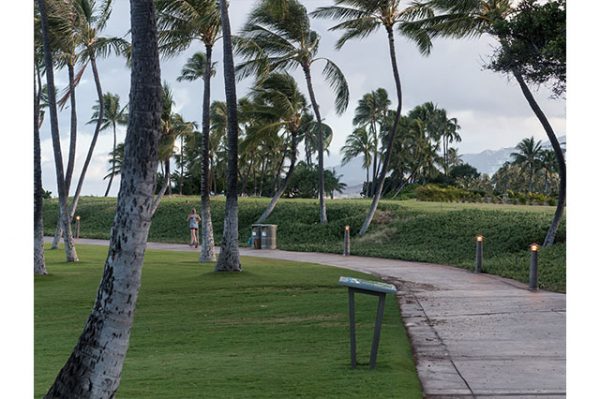
He also said that while he's definitely seen the glowing waves shortly after sunset, he notices they are more noticeable after midnight. The higher the tide the less noticeable the glow is, Girardeau added. "You have to hang out there for a while because it depends on the sets." "We get messages all the time from people saying they went down on the beach and stood there for like five minutes and didn't see it and they just left," Girardeau said. Girardeau said you have to let your eyes adjust to the bioluminescence as waves some nights only have a faint glow. What's the best way to see bioluminescence at the beach?

Girardeau recommends checking out a couple of beaches where they have been reported and staying at each one for a while to determine whether they're visible. The phenomenon can also be seen anywhere along the National Seashore's coastline, according to the National Park Service. include Tomales Bay State Park in northern California, Vieques National Wildlife Refuge in Puerto Rico, Olympic Coast National Marine Sanctuary in Washington and bays near Acadia National Park in Maine. Notable spots to see bioluminescence in popular bodies of water in the U.S. Phytoplankton blooms occur in the Gulf of Alaska thanks to the nutrient-rich water that provides fertile conditions for species, according to NASA. The best times to see bioluminescence are in the summer and fall on dark, cloudy nights before the moon has risen or after it sets, according to the National Park Service. Watch: Florida kayaker captures video of dolphin swimming in bioluminescence waters for its food When and where can I find bioluminescence? Phytoplankton can grow explosively over a few days or weeks, according to NASA. Phytoplankton are an essential part of making the planet livable as they contribute to the global carbon cycle as key producers of oxygen. Dinoflagellates and diatoms are the two main types of phytoplankton classes, according to the National Ocean Service. The species is a type of dinoflagellate, a single-celled organism with two flagella. polyedra), a plankton species recognized for the neon blue glow it emits, causes the spectacle, according to a 2020 report by UC San Diego’s Scripps Institution of Oceanography and Jacobs School of Engineering. High densities of Lingulodinium polyedra (L. What species cause bioluminescence waves? Most marine and land organisms' bioluminescence appears blue-green, however, some land species, such as fireflies, beetle larvae, and even mushrooms, also glow yellow. When these organisms are moved by waves or the paddle of a kayak or canoe, the light becomes visible. "It was like super bright." How does bioluminescence make waves glow at night?īioluminescence, a chemical reaction most commonly seen in marine organisms, causes light to emit from living things.

I thought it was just a super rare phenomenon," Girardeau said. Girardeau shared photos and video on his website and social media platforms.Ī post shared by Mark Girardeau was freaking out because I've never seen this before.

Having documented the glowing waters annually since the 2020 super bloom, he and his fellow photographer partner Patrick Coyne did not hesitate to capture more stunning images. Girardeau, who works at a whale watching boat in Newport Beach, noticed on Sunday the ocean appeared a brown red color during the day and later learned his instincts were right that the bioluminescence returned. And then if you go walk in, it just lights up super bright." "At Main Beach they have some pools that fill up in the sand during high tide and then the water just sits there once the tide goes down. “Some years have been better but this year, so far at least this week, has had pretty bright bio” said nature photographer Mark Girardeau, who runs the website Orange County Outdoors. The bioluminescence waves, which turn the ocean red during the day and glow neon blue night, have been reported being seen at multiple California city coasts including Newport Beach, Laguna Beach, Oxnard, Malibu, and San Diego coastlines over the past week. Beachgoers spotted bright blue, glowing waves in Southern California’s coastline this week.


 0 kommentar(er)
0 kommentar(er)
